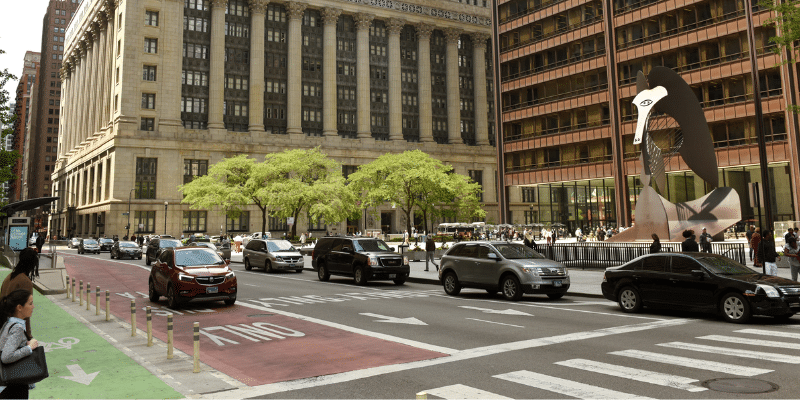
A hyper-water-efficient municipal campus does more than save money. It demonstrates leadership, showing that government can act responsibly and set a sustainability example that the community can follow and be proud of.
Water reuse is an on-ramp to the circular economy
Civic campuses are some of the most expensive and visible public investments a city will make this decade. With so many U.S. municipalities planning new administrative centers, justice complexes, and multi-building civic districts, leaders have a rare opportunity to design water efficiency and resilience directly into the campus footprint.
Integrating on-site water reuse at this stage delivers measurable returns—cutting potable demand, lowering operating costs, and helping cities meet sustainability commitments without adding operational burden. When purple-pipe networks—used to transport recycled water for non-potable uses—are planned during design, payback periods shrink dramatically. Additionally, the long-term savings are easy for taxpayers to understand and support.
Governmental bodies now recognize that water reuse has matured. Federal agencies track reuse in gallons saved and percentage reused, and sustainability frameworks treat reuse rates as standard performance indicators.
Why Reuse Belongs in Civic Campus Design
While retrofitting purple pipe networks into existing buildings can be costly and disruptive, their use in new construction changes the equation. Payback periods for integrated on-site reuse can be as short as a few years.
Modular, containerized treatment units such as Aspiral™ also make good neighbors. These units generate little odor or noise on extremely compact footprints and offer custom paint to match municipal color schemes, promote civic themes, or just blend into the background.
But a hyper-water-efficient campus does more than save money. It demonstrates leadership, showing that government can act responsibly and set a sustainability example that the community can follow with pride.
New Civic Campuses Are Ideal for On-site Reuse
New civic campuses are ideal for integrating on-site treatment and purple-pipe distribution networks because planners can design both systems into the project from the beginning. Early planning allows engineers to place treatment units, storage tanks, and nonpotable distribution lines alongside the main potable network to reap the benefits without the cost and disruption of retrofitting. Federal guidance also encourages integrated approaches to reuse, reinforcing the value of planning reuse systems as part of the main construction package.
Purple-Pipe Applications for Civic Campuses
- Irrigation
A dedicated purple-pipe network supplies highly treated nonpotable water for lawns, gardens, courtyards, and public spaces, and data from large institutional systems shows they are already reducing potable use by more than one hundred million gallons per year. - HVAC makeup and condensate capture
Cooling towers require steady makeup water, which makes them ideal candidates for reuse, and purple-pipe collection networks allow efficient condensate capture to supplement the nonpotable supply with naturally low-mineral water. - Fleet and building washing
Wash bays and exterior cleaning do not require drinking water. Planning nonpotable routing during construction reduces potable demand, simplifies trenching, and keeps daily operations efficient. - Water features, fountains, and lagoons
When treated effluent meets reuse standards, it can safely supply fountains and lagoons without harming aquatic life or promoting algal growth.
Real-World Institutional Water Reuse
Institutional campuses have proven that on-site reuse can offset hundreds of millions of gallons of potable water, and numerous examples show successful reuse for irrigation, cooling, and water features in public and educational facilities.
For instance, the Austin Permitting and Development Center offers a strong model for civic campus reuse. The facility integrates on-site treatment, nonpotable distribution, and a dedicated purple pipe network as part of Austin’s broader reclaimed water program. It supports irrigation and HVAC makeup with highly treated nonpotable water that meets strict local reuse standards. Because the unified campuswide system was designed during construction, costs were a fraction of a retrofit.
Fluence supports these types of outcomes with containerized treatment systems and managed service models designed specifically for municipal environments.
How Fluence Delivers Reliable Campus-Scale Reuse
While many governments recognize the value of on-site reuse, few want to expand staff, take on operational risk, or add technical complexity to new civic campuses. Fluence’s solutions are designed specifically to remove these barriers, allowing municipalities to capture the savings of reuse without taking on the responsibility of operating a treatment plant

Aspiral™ Flex units can be custom-painted to match local architecture, municipal color palettes, or community themes, allowing treatment systems to blend seamlessly into civic campuses and public spaces.
Water Management Services (WMS): Fluence’s Water Management Services provides on-site treatment with no upfront investment for the city under qualifying long-term service arrangements. Fluence manages performance, continuous monitoring, and all operations and maintenance, ensuring a stable nonpotable supply and predictable costs. This lets civic campuses benefit from reuse as a reliable service rather than an in-house utility.
Containerized Treatment: Aspiral™ Flex delivers high-quality effluent for nonpotable applications that can exceed California Title 22 reuse requirements. Because all processes are containerized, the system installs quickly, fits into tight or phased construction sites, and can scale or relocate as the campus evolves. Quiet, low-odor operation makes it ideal for municipal settings where aesthetics and community experience matter.
Looking Ahead
Civic campuses can serve as high-profile examples of fiscal responsibility and commitment to long-term resilience when they integrate on-site reuse from the beginning. A purple-pipe network paired with quiet, low-odor modular treatment allows the campus to supply irrigation, flushing, cooling, and water features with low-cost reclaimed water.
The savings are measurable, verifiable, and easy for the public to support. Contact Fluence to explore a more welcoming water future for your new civic campus by building in sustainability and resilience.
